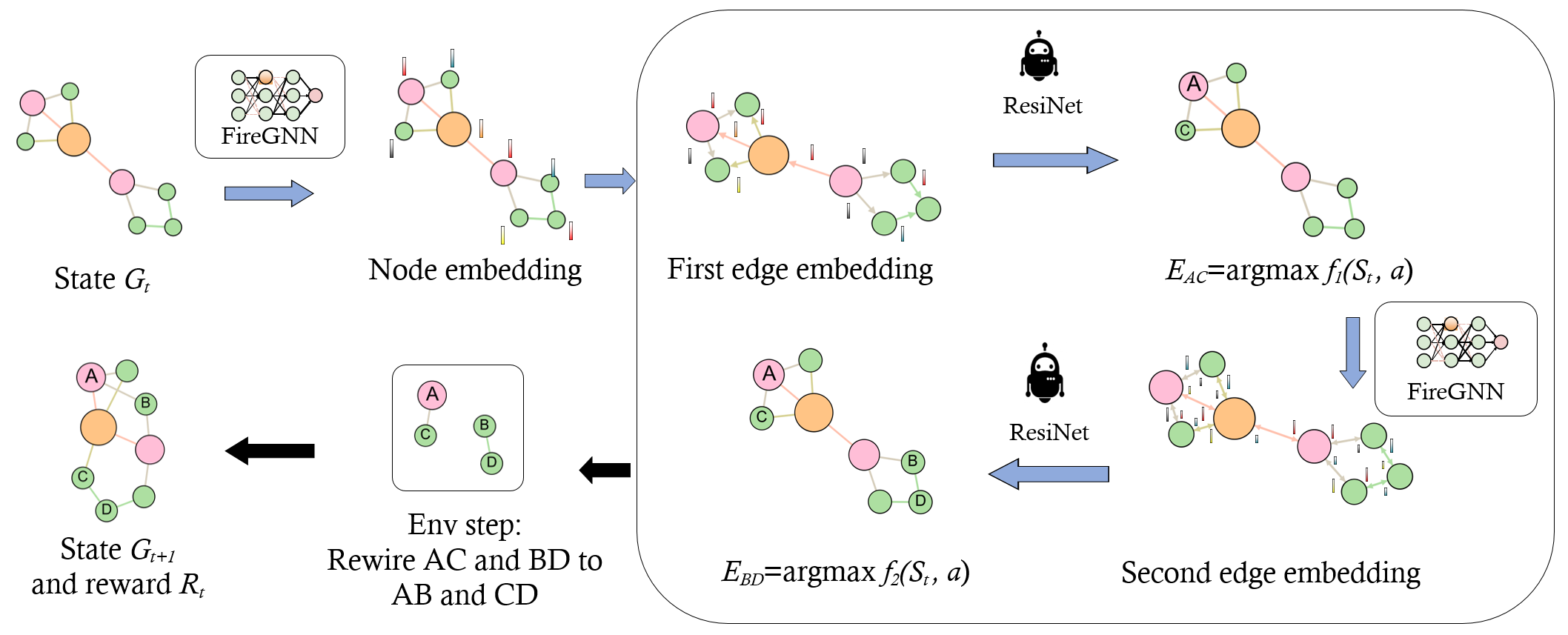Edge Rewiring Goes Neural: Boosting Network Resilience without Rich Features
Improving the resilience of a network is a fundamental problem in network science, which protects the underlying system from natural disasters and malicious attacks. This is traditionally achieved via successive degree-preserving edge rewiring operations, with the major limitation of being transductive. Inductively solving graph-related tasks with sequential actions is accomplished by adopting graph neural networks (GNNs) coupled with reinforcement learning under the scenario with rich graph features. However, such frameworks cannot be directly applied to resilience tasks where only pure topological structure is available. In this case, GNNs can barely learn useful information, resulting in prohibitive difficulty in making actions for successively rewiring edges under a reinforcement learning context. In this paper, we study in depth the reasons why typical GNNs cause such failure. Based on this investigation, we propose ResiNet, the first end-to-end trainable inductive framework to discover resilient network topologies while balancing network utility. To this end, we reformulate resilience optimization as an MDP equipped with edge rewiring action space, and propose a pure topology-oriented variant of GNN called filtration enhanced graph neural network (FireGNN), which can learn from graphs without rich features. Extensive experiments demonstrate that ResiNet achieves a near-optimal resilience gain on various graphs while balancing the utility, and outperforms existing approaches by a large margin.
PDF Abstract

